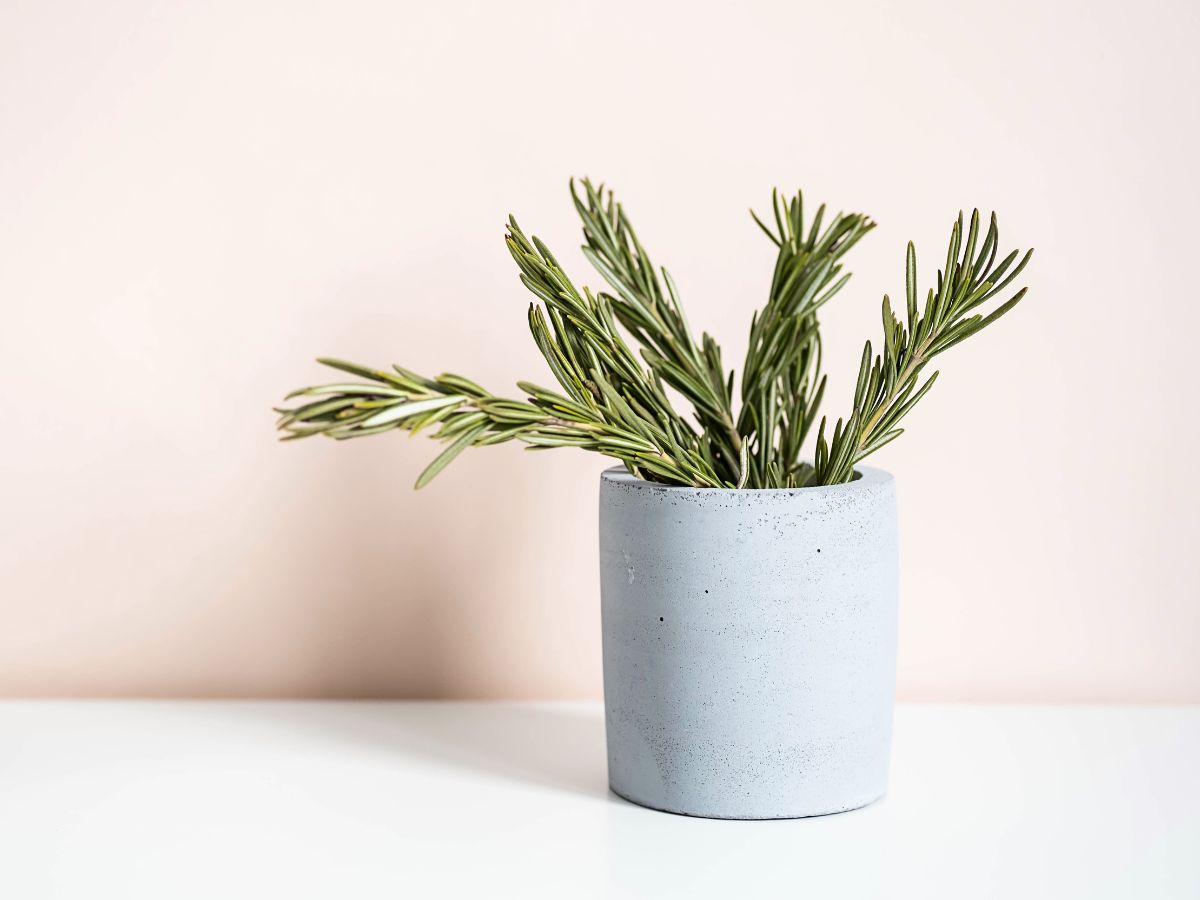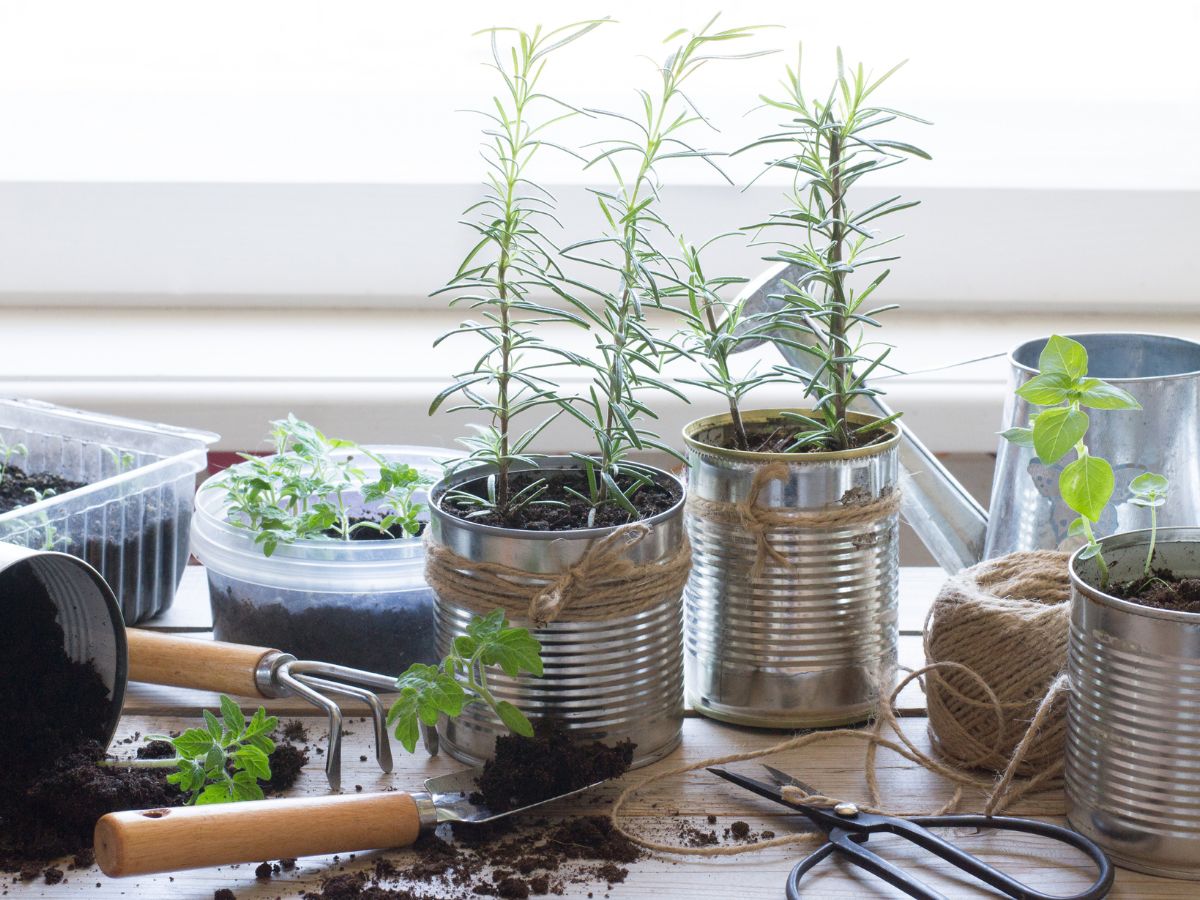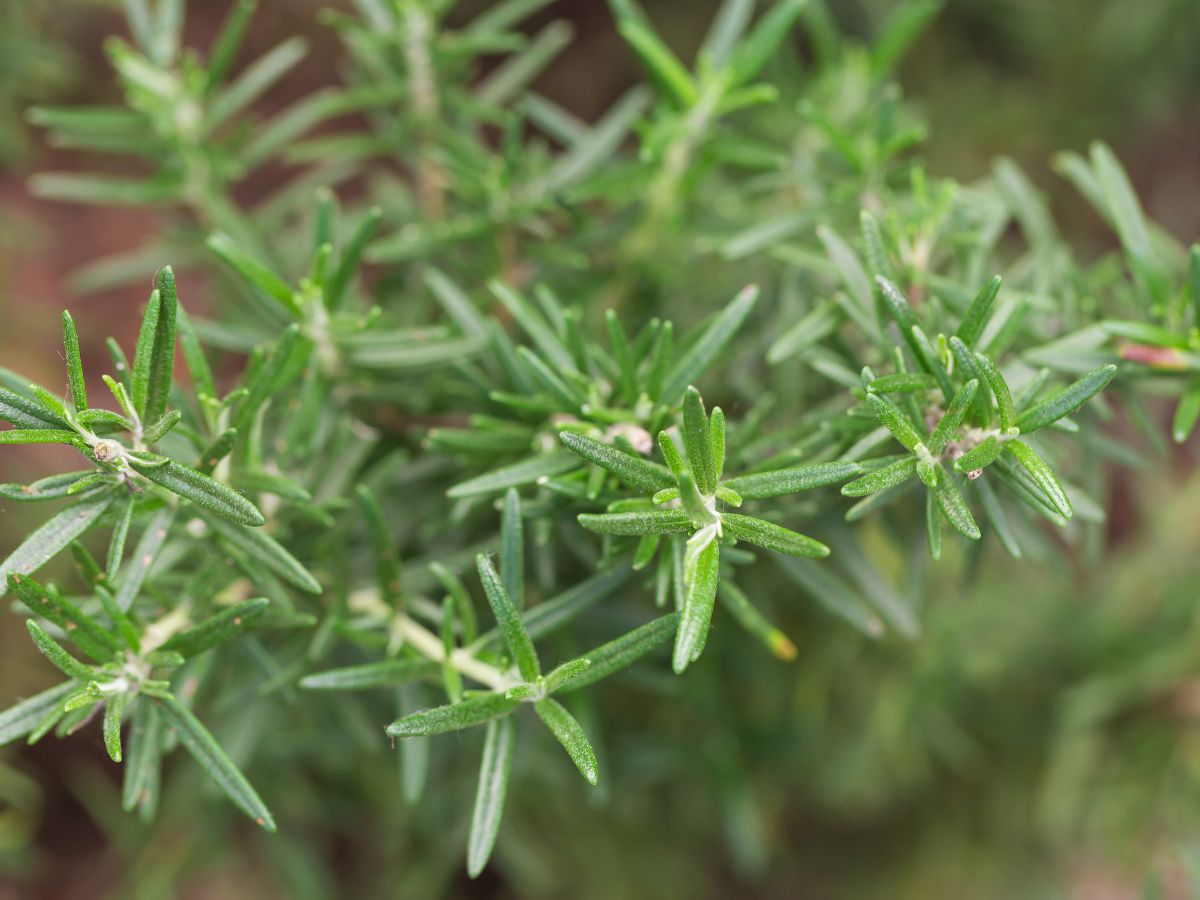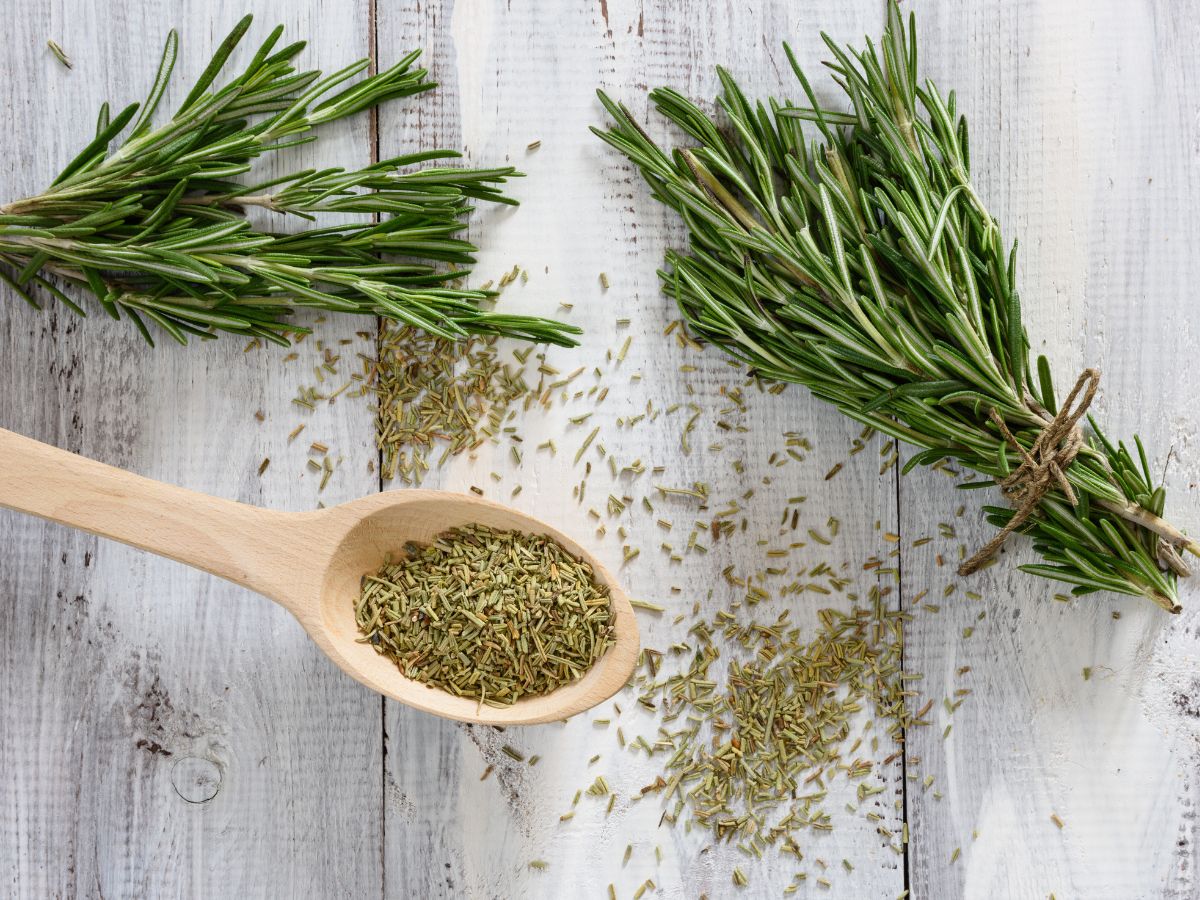Herb gardens are on the rise with more and more people choosing to grow their own herbs from the comfort of their own homes. There are so many essential herbs and spices we all use in our cooking on a daily basis and rosemary definitely fits the bill. Rosemary is a beautifully fragrant herb which alongside providing extra flavor in your cooking it also looks stunning. These spindly plants are easily recognizable by the individual small, sharp leaves.
Rosemary is often used in Mediterranean foods and it is increasingly becoming known that the Mediterranean diet is heralded as one of the healthiest diets in the world. Rosemary is an excellent source of antioxidants and anti-inflammatory compounds. Both of these will help boost your immune system. Rosemary has also been linked to improvement in memory.

Fragrances in rosemary have been connected to stress relief and mental wellbeing. With all these wonderful medicinal properties, growing rosemary is an excellent choice for your indoor herb garden.
Growing rosemary indoors may seem quite difficult and you may be scared to take the plunge because you know it will be consumed once grown. But trust us, it is easier than you think and is sure to be perfectly delicious if you follow this guide on how to grow rosemary inside.
How to Grow Rosemary Indoors?
We’ve decided the easiest way to understand growing rosemary inside is by using a step-by-step guide. Naturally, if you are growing a rosemary plant indoors then you will be growing rosemary in containers.
Planting rosemary in pots is the most common way to grow rosemary both inside and outside however some people choose not to grow rosemary indoors and instead opt for planting rosemary in their flower beds. I’m sure you’ve asked yourself many times ‘Can you grow rosemary indoors?’ Well, we believe in growing herbs indoors, so follow this guide on how to grow rosemary in pots and you’ll have your very own herb garden in no time!

Step 1. Planting Rosemary in a Pot
The first thing you need to know when planting rosemary in a pot is they need to have well-draining soil, we suggest mixing regular potting soil with sand. This is an essential step to ensure your rosemary plant doesn’t rot in the long run. Rosemary plants love to be dry, so choosing the correct pot for planting is a great way to provide the ideal environment for your rosemary. Terracotta pots are perfect for growing rosemary as they will allow your plant to dry out faster, choose one on the larger side to give your plant plenty of room to grow.
Rosemary can be grown from both seeds and cuttings, we’ve chosen to focus on how to plant rosemary from seeds as this is the most common method. It is also possible to buy a pre-planted rosemary plant from a garden center in which case move directly to step two.
Fill your pot ¾ of the way up, make small holes in the soil using the tip of your finger and place your rosemary seeds inside. We don’t recommend planting too many seeds in the same pot and rosemary plants don’t enjoy being crowded. Cover your seeds with a little more mix until your pot is almost filled to the top. Water lightly so the soil is moist but not drenched. And place your plant in the perfect location.
Step 2. Location, Location, Location
As mentioned above, rosemary plants love to stay dry, so place your rosemary in a location that receives plenty of sunlight each day. A south-facing window is perfect for growing rosemary as it is likely to have enough access to sunlight throughout the day. Six to eight hours of sunlight each day should be enough for your rosemary to thrive. It is also important your rosemary plant is not exposed to too many drafts. So make sure your windows aren’t too drafty. If they are, you may need to find a different location and use a growing light to help your rosemary plant flourish.
Step 3. Caring for Your Rosemary

Caring for a rosemary plant is fairly easy, especially once you get to know your plant. Many herbs are great for beginner gardeners and rosemary is no exception. Once you understand the fundamental principles of caring for a rosemary plant you will be well on your way to having a big bushy rosemary plant in your home ready for trimming when you need a spring or two. You should always water your rosemary thoroughly but allow the soil to completely dry out between each watering.
Harvesting Rosemary
Rosemary can be harvested when the plant has reached a height of about 8-10 inches. Here are some tips on harvesting and storing rosemary:
- Ideal time for harvesting: The best time to harvest rosemary is in the morning after the dew has evaporated but before the heat of the day. This is when the essential oils are at their highest concentration in the leaves, giving the herb its distinct aroma and flavor.
- Harvesting techniques: To harvest rosemary, use a pair of sharp pruning shears or scissors to cut the stems just above a leaf node. This will encourage new growth and keep the plant bushy. Be sure to leave enough foliage on the plant to allow it to continue to grow.
- Proper storage of harvested rosemary: Once you have harvested your rosemary, you can use it fresh or dry it for later use. To dry rosemary, bundle a few stems together and hang them upside down in a warm, dry place, such as an attic or garage. Once the leaves are dry and brittle, remove them from the stems and store them in an airtight container in a cool, dry place. This will keep the rosemary fresh for several months.

Alternatively, you can freeze rosemary by washing and drying the leaves, chopping them finely, and placing them in an ice cube tray with a little water. Once frozen, remove the cubes and store them in a freezer bag. This allows you to easily add rosemary to dishes throughout the year.
Frequently Asked Questions
How often should I water my rosemary plant?
Rosemary prefers well-draining soil and should be watered when the top inch of soil is dry. This may be once a week or more frequently in hot, dry weather. Avoid over-watering as this can lead to root rot.
Can I grow rosemary indoors?
Yes, rosemary can be grown indoors in a sunny window or under grow lights. Be sure to use a well-draining potting mix and water when the top inch of soil is dry.
What is the best time of year to plant rosemary?
Rosemary can be planted at any time of year, but it is best to plant in the spring or fall when the weather is mild and the plant has time to establish before extreme heat or cold sets in.
How can I propagate rosemary?
Rosemary can be propagated from cuttings taken in the spring or early summer. Take a 4-6 inch cutting from the tip of a healthy stem, remove the lower leaves, and place in a pot filled with moist potting mix. Keep the cutting in a warm, sunny location and water as needed until roots develop.
What are the benefits of using rosemary in cooking?
Rosemary adds flavor and aroma to many dishes, particularly meats and vegetables. It also contains antioxidants and anti-inflammatory compounds that may have health benefits.
Can I use dried rosemary instead of fresh in recipes?
Yes, dried rosemary can be used in place of fresh in most recipes. Use about half as much dried rosemary as fresh, as the flavor is more concentrated.
How can I keep pests away from my rosemary plant?
Rosemary is generally resistant to pests, but if you do have a problem, try spraying the plant with a mixture of water and dish soap or using an insecticidal soap. Prune the plant regularly to keep it healthy and remove any damaged or diseased foliage.
What are some other uses for rosemary besides cooking?
Rosemary can be used in aromatherapy, as a natural insect repellent, and in personal care products such as soaps and shampoos. It may also have medicinal properties, such as improving digestion and reducing inflammation.
Final Words
Most rosemary plants don’t require pruning however if you are looking for a fuller plant then trimming your rosemary will do plenty of good. In fact, it may even help your rosemary thrive!
Now you know everything you need to know about growing rosemary in pots, you’ll no longer be asking yourself ‘Can rosemary be grown indoors’ because you’ll know for sure it can!


